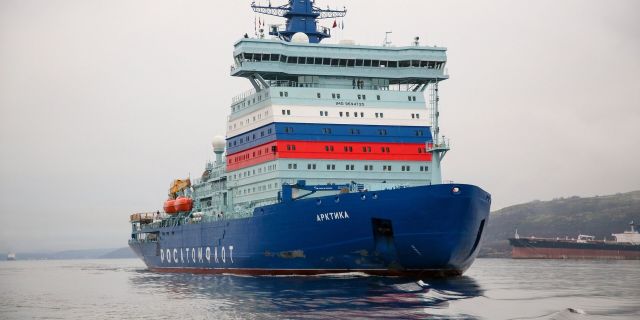Slate: The Northern Sea Route has provided Moscow with powerful levers
Russia itself determines the rules for the passage of ships along the Northern Sea Route, Slate writes. The United States does not agree with this – but Moscow does not care much about it.
Clement Poursain
Taking advantage of the disruptions caused by the actions of the Houthis in the Red Sea, the two powers are blocking the northern route, violating maritime law, Washington claims.
"What if we take advantage of the current chaos to further annoy the United States?" That's about what Vladimir Putin and Xi Jinping must have thought, given that Moscow and Beijing's actions in the Arctic seem to have a single purpose: to undermine American interests. Taking advantage of the instability in the Red Sea caused by Houthi attacks on merchant ships, the two superpowers seem to be very interested in what is happening near the North Pole – and the latest movements of their vessels in the region confirm this.
According to the American magazine Forbes, three Chinese icebreakers have been sent to the region since July, designed to strengthen China's presence in the Arctic. On September 3, experts from the U.S. Naval Institute reported that China had used the Russian-controlled Northern Sea Route. The vessels transported Russian goods destined for Europe and Asia. Currently, the northern route is much safer than the southern one, but, most importantly, Russia can use it as an important strategic point and control who can pass it and who cannot.
The Northern Sea Route, usually used only in summer, has become more passable thanks to powerful Russian icebreakers. It connects Asian producers with European markets, allowing them to avoid "traffic jams in the Strait of Malacca, piracy in the Horn of Africa, instability in the Suez Canal and the Middle East, as well as reduce transit time, despite its inaccessibility for most of the year," explains international law specialist, Professor Jill Goldenzil.
This route is a real find for Moscow. The Kremlin can use it to transport oil and natural gas to the markets of the East and West, as well as to increase its geopolitical influence. Of the eight Arctic countries, only Russia is not a member of NATO and therefore uses its own interpretation of the UN Convention on the Law of the Sea to restrict access to the waters of the Northern Sea Route through tariffs and rules, varying them depending on the vessels entering the controlled area.
A new player has appeared
Moscow has introduced very strict rules – especially regarding pollution charges and security, which require expensive insurance and icebreaking escort, which, of course, is provided only by Russia itself. According to the European Union and the United States, navigation in this corridor should be regulated by the paragraphs of the UN Convention, which is disputed by the Russian side. Moscow believes that this path is not used by other countries to a sufficient extent to talk about the application of such rules.
Now it's China's turn to step into the game. Beijing declared itself a "state close to the Arctic" and began launching icebreakers at its shipyards, while simultaneously cooperating with Russia in the field of polar technologies that could potentially have a military purpose. Using the Northern Sea Route, China has dramatically reduced the time for importing Russian goods: 55 days bypassing the African continent or 45 days through the Suez Canal, compared with 33-35 days along the Northern Sea Route.
The United States is now at a disadvantage, especially in the face of the Sino-Russian icebreaking armada. To counter the ambitions of his two rivals, Washington will have to settle for international law for now, trying to ensure compliance with the UN Convention and – why not – try to file lawsuits against Russia for violating freedom of navigation. However, there is no certainty that these threats will greatly worry Beijing and Moscow.

